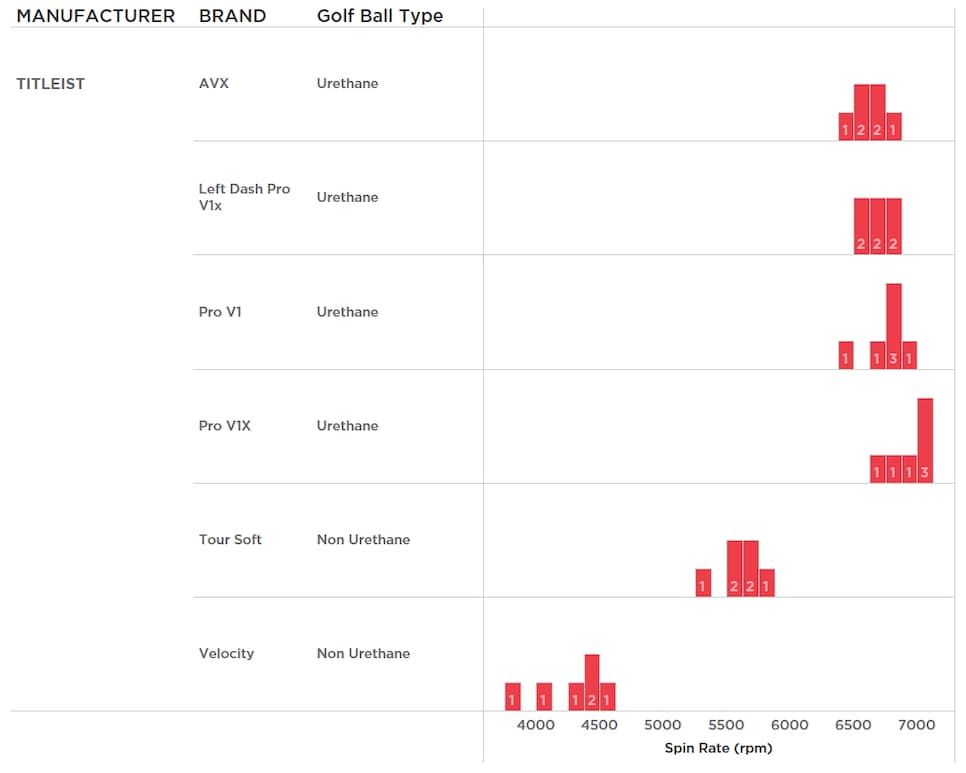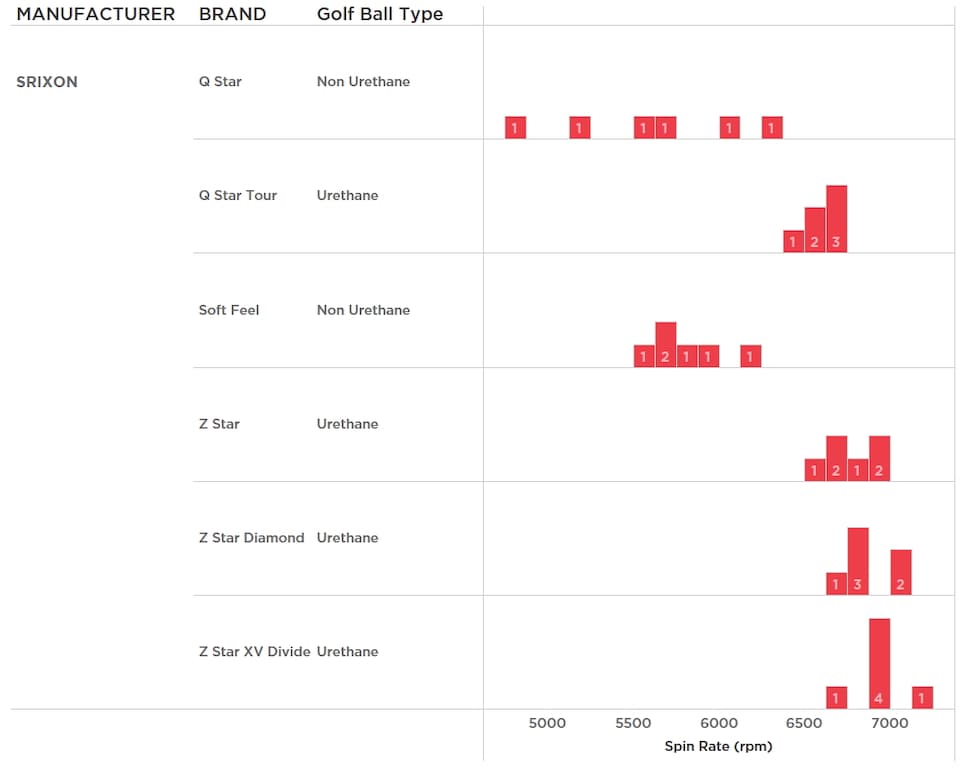[PHOTO: Raj Mehta]
Let’s get this out of the way: urethane is the benchmark when it comes to premium golf ball performance, especially in the spin department. But that doesn’t mean non-urethane balls are automatically out of the conversation, especially when you dig into the spin data, as we’ve done with the help of the Golf Laboratories swing robot.
RELATED: Hot List 2025 – Golf balls (non-urethane)
During half-wedge shot testing (roughly 35 metres), Srixon’s Q Star and Soft Feel, and Titleist’s Tour Soft appear to be quietly borrowing pages from the urethane playbook. We’re talking about mid-tier offerings (by price) that produce spin rates with a half wedge that flirt with those of their premium siblings.
Let’s break down the numbers and the narrative.
RELATED: Hot List 2025 – Golf balls (urethane)
Testing protocol
For this test, we ran ball models from 12 brands through half-wedge testing to determine if non-urethane offerings had anything in common with their urethane counterparts. The robot also executed shots with each model to establish a standard deviation from ball to ball.
Turning heads
The obvious question is why fixate on 35 metres? For many pros, this is the critical distance during head-to-head testing around the green. The ball isn’t just a piece of equipment – it’s a finely tuned weapon designed to deliver across a spectrum of demands.
Off the tee, it needs to possess explosive distance with low spin to maximise carry and roll; from 135 metres in, the ball must respond with sharp, consistent spin to hold greens and execute precise shot shapes; and around the greens, it needs to check up quickly, offering soft feel and control on delicate chips and pitches.
This trifecta of distance, spin and feel is why urethane balls dominate the pro ranks. They don’t just excel in one category; they perform across the board. A ball that leans too heavily on distance often sacrifices the short-game spin and control.

For pros, every shot counts, so their ball has to be versatile enough to do it all – and that’s a tough standard for non-urethane balls to meet. Yet, as the data shows, certain non-urethane contenders are starting to bridge this gap, challenging the notion that weekend golfers have to sacrifice spin for durability or cost.
Compared to the rest of the non-urethane pack, Q Star, Soft Feel and Tour Soft produced numbers that were outside the norm. On average, non-urethane balls produced 3,849rpm and a 37.5-degree launch on a 35-metre wedge shot.
The three standouts listed below averaged 5,600rpm with a 34.9-degree launch, meaning you’ll see more spin and a lower, more controlled launch around the green. It’s a significant improvement from the high-launch, low-spin numbers the rest of the non-urethane offerings produced on touch shots.
 Insights
Insights
Srixon Q Star: Spin rates ranged between 4,700 and 6,400rpm. The top-end spin numbers overlap directly with several urethane models, like the OnCore Vero X1, PXG Xtreme Tour and Callaway Chrome Soft.

If there’s a number that gives pause, it’s the standard deviation on spin, which was more than 550rpm. It means there was a noticeable difference in spin from one ball to the next during testing. (It was the widest standard deviation of any ball we tested.)
Srixon Soft Feel: This one surprised even more. With five of six shots registering north of 5,500rpm – peaking around 6,100 – it inches into Callaway Chrome Soft and Maxfli Tour S territory.
It offers performance at a lower price point.
Titleist Tour Soft: Perhaps the most consistent of the three, Tour Soft’s spin profile looked eerily similar to TaylorMade Tour Response and Maxfli Tour, both urethane balls. Shots ticked past 5,300rpm and settled around 5,900 in a tight cluster. The numbers showed reliability on partial swings.
 Bottom line
Bottom line
These three balls aren’t going to dethrone the Titleist Pro V1 or Callaway Chrome Soft X anytime soon. But they no doubt fill an important void in the marketplace, especially if you’re a weekend warrior who doesn’t want to pay $80-$90 a dozen – or loses a few more balls per round than you’d like to admit.
Srixon Q Star, Srixon Soft Feel and Titleist Tour Soft are more than worthy alternatives. They’re the rare examples of non-urethane balls that act like urethane models, especially on touch shots inside 40 metres.
Don’t sleep on these “mid-tier” offerings.




